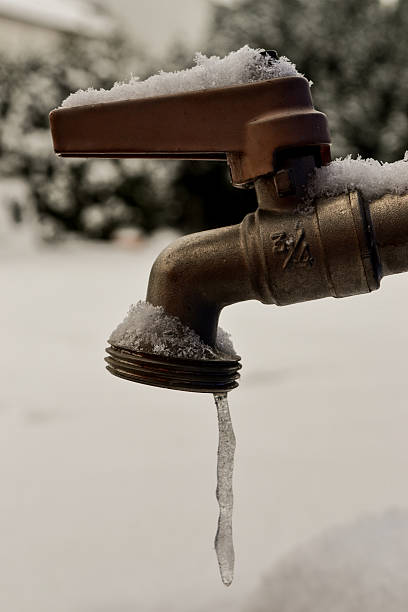Preventing Frozen Pipes: Effective Methods for Winter
Preventing Frozen Pipes: Effective Methods for Winter
Blog Article
Have you been trying to find additional info involving Preventing and dealing with frozen pipes?

Winter can wreak havoc on your plumbing, particularly by freezing pipes. Here's how to avoid it from occurring and what to do if it does.
Introduction
As temperatures drop, the threat of icy pipes boosts, possibly leading to costly repair services and water damage. Understanding just how to stop frozen pipes is critical for house owners in chilly environments.
Prevention Tips
Shielding at risk pipes
Wrap pipes in insulation sleeves or use warmth tape to secure them from freezing temperatures. Concentrate on pipes in unheated or outside areas of the home.
Heating techniques
Maintain indoor areas appropriately heated, specifically areas with pipes. Open closet doors to enable warm air to circulate around pipes under sinks.
How to determine icy pipelines
Look for decreased water circulation from faucets, unusual odors or sounds from pipelines, and noticeable frost on exposed pipelines.
Long-Term Solutions
Structural adjustments
Think about rerouting pipes away from outside wall surfaces or unheated areas. Add extra insulation to attic rooms, basements, and crawl spaces.
Updating insulation
Buy top quality insulation for pipes, attic rooms, and wall surfaces. Appropriate insulation helps preserve consistent temperatures and reduces the risk of frozen pipes.
Safeguarding Outdoor Plumbing
Yard hose pipes and outdoor taps
Separate and drain yard pipes before wintertime. Set up frost-proof faucets or cover outside taps with protected caps.
Understanding Frozen Pipes
What creates pipelines to ice up?
Pipes freeze when revealed to temperature levels listed below 32 ° F (0 ° C) for expanded durations. As water inside the pipes ices up, it expands, taxing the pipe wall surfaces and possibly causing them to burst.
Risks and damages
Frozen pipes can result in water disturbances, property damages, and pricey repair services. Burst pipelines can flooding homes and cause comprehensive architectural damages.
Indicators of Frozen Pipeline
Recognizing frozen pipes early can prevent them from rupturing.
What to Do If Your Pipelines Freeze
Immediate actions to take
If you think icy pipelines, maintain taps open up to soothe stress as the ice thaws. Make use of a hairdryer or towels taken in warm water to thaw pipes slowly.
Verdict
Preventing frozen pipes requires aggressive procedures and quick feedbacks. By comprehending the reasons, indications, and safety nets, property owners can secure their pipes during cold weather.
5 Ways to Prevent Frozen Pipes
Drain Outdoor Faucets and Disconnect Hoses
First, close the shut-off valve that controls the flow of water in the pipe to your outdoor faucet. Then, head outside to disconnect and drain your hose and open the outdoor faucet to allow the water to completely drain out of the line. Turn off the faucet when done. Finally, head back to the shut-off valve and drain the remaining water inside the pipe into a bucket or container. Additionally, if you have a home irrigation system, you should consider hiring an expert to clear the system of water each year.
Insulate Pipes
One of the best and most cost-effective methods for preventing frozen water pipes is to wrap your pipes with insulation. This is especially important for areas in your home that aren’t exposed to heat, such as an attic. We suggest using foam sleeves, which can typically be found at your local hardware store.
Keep Heat Running at 65
Your pipes are located inside your walls, and the temperature there is much colder than the rest of the house. To prevent your pipes from freezing, The Insurance Information Institute suggests that you keep your home heated to at least 65 degrees, even when traveling. You may want to invest in smart devices that can keep an eye on the temperature in your home while you’re away.
Leave Water Dripping
Moving water — even a small trickle — can prevent ice from forming inside your pipes. When freezing temps are imminent, start a drip of water from all faucets that serve exposed pipes. Leaving a few faucets running will also help relieve pressure inside the pipes and help prevent a rupture if the water inside freezes.
Open Cupboard Doors
Warm your kitchen and bathroom pipes by opening cupboards and vanities. You should also leave your interior doors ajar to help warm air circulate evenly throughout your home.

We were introduced to that editorial on Winter Plumbing Precautions: Preventing Frozen Pipes from a friend on another blog. Are you aware of somebody else who is involved in the subject? Be sure promote it. Many thanks for being here. Return soon.
Schedule A Service Call Report this page